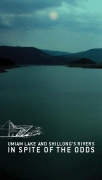/topics/voluntary-citizen-or-civil-society-sector
Voluntary Citizen or Civil Society Sector
Mitigating climate change through organic agriculture - Keynote address at the Third Organic Farming Association of India Convention, held at Anand, Gujarat (2010)
Posted on 25 Dec, 2010 10:43 PMGreen Revolution (GR) technologies, supported by official policies, and fuelled by agro-chemicals, machinery and irrigation, are well known to have improved agricultural production and productivity. While these technologies greatly helped developing countries to address their food-security and food-sovereignty needs, farmers using these technologies have had to depend on external inputs.
Rainfed areas and rice farming Crucial agricultural water issues
Posted on 25 Dec, 2010 08:30 PMJohn Thompson works on power, policy and sustainability issues in food and agriculture, water resource management and rural development. He is a STEPS Centre member, IDS Fellow and joint Co-ordinator of the Future Agricultures Consortium. He presents two crucial agricultural water issues to take priority on World Water Day.
Umiam Lake and Shillong's Rivers: In spite of the odds – An advocacy flyer by Arghyam and Peoples Learning Centre
Posted on 22 Dec, 2010 11:01 PM This advocacy flyer by Arghyam and Peoples Learning Centre (PLC) Shillong highlights some of the main problems, action underway and potential solutions to cleaning up the water bodies of Shillong. It deals with the expanding human habitats and escalating socio-economic activities around the rivers Umkrah and Umshyrpi that flow through Shillong leading to their choking with sewage and pollution. This wastewater eventually enters Lake Umiam, which is a reservoir for hydro-electric power.
This advocacy flyer by Arghyam and Peoples Learning Centre (PLC) Shillong highlights some of the main problems, action underway and potential solutions to cleaning up the water bodies of Shillong. It deals with the expanding human habitats and escalating socio-economic activities around the rivers Umkrah and Umshyrpi that flow through Shillong leading to their choking with sewage and pollution. This wastewater eventually enters Lake Umiam, which is a reservoir for hydro-electric power.
PLC is a non-profit organisation that works towards promoting knowledge on equity and rights, and is a platform for facilitating interdisciplinary dialogues between stakeholders in key developmental issues. Arghyam supports PLC in engaging with decision makes as well as citizens in order to create public opinion about river and lake pollution, and promote catchment friendly practices.
Water Jobs via DevNetJobsIndia.org dated December 22, 2010
Posted on 22 Dec, 2010 11:27 AMContent Courtesy: DevNetJobsIndia
- State Consultant, Water Safety and Security
Ma Foi Consulting Solutions Limited
Land acquisition for Renuka dam continues despite uncertainties - Press release from the Renuka Bandh Sangharsh Samiti
Posted on 21 Dec, 2010 12:24 PMForwarded to the portal by: Manshi Asher
Content Courtesy: Himvani
Author: Renuka Bandh Sangharsh Samiti
Despite protest against forced acquisition of land, Himachal Pradesh Power Corporation Limited (HPPCL) and revenue administration today notified Section 9 of the Land Acquisition Act 1894, for approximately 680 big has (about 57 hectares) of land of Panaar Village for the Renuka Dam Project. In a letter to the Chief Justice of Himachal Pradesh High Court sent today, activists appealed for a stay on land acquisition for the project, considering the uncertainty surrounding the project.
Action Beyond Dialogue, The Young Changemakers Conclave, 7th Jan 2011, New Delhi
Posted on 21 Dec, 2010 10:44 AMThe Young Changemakers Conclave
Theme: 'Action: Beyond Dialogue'
Organizer: The Young Changemakers Conclave
Topics:
- Human Rights
- Educational Opportunity for all
- Poverty & Hunger
- Environmental Sustainability
- Intercultural Dialogue
- Water: Harvestation & Conservation
2011 India Development Marketplace Competition
Posted on 20 Dec, 2010 05:02 PMContent and Image Courtesy: Development Marketplace (DM)
The Development Marketplace (DM) is a competitive grant program that identifies and funds innovative social enterprises working on projects with high potential for development impact.
State Bank of India (SBI) Youth for India Fellowships Programme 2011
Posted on 20 Dec, 2010 04:26 PMContent and Image Courtesy: Youth for India

SBI Youth for India is a fellowship programme initiated, funded and managed by the State Bank of India in partnership with reputed NGOs. It provides a framework for India's best young minds to join hands with rural communities, empathise with their struggles and connect with their aspirations. The programme seeks to help India secure an equitable and sustainable growth path by:
- Providing educated Indian youth with an opportunity to touch lives and create positive change at the grass root level in rural India
- Providing NGOs working on development projects in rural India with educated manpower whose skill sets can be used to catalyze rural development
- Promoting a forum for the programme alumni to share ideas and contribute to rural development throughout their professional life
Mining - An increasing threat to our rivers - Article by Nitya Jacob
Posted on 20 Dec, 2010 12:29 AMContent Courtesy: Solution Exchange and Nitya Jacob
Author: Nitya Jacob
India’s arteries are choking. Her rivers, the lifeline of hundreds of millions, are over-taxed, polluted and encroached. They are being mined, dammed and emptied of water. Save for the four monsoon months, most rivers are streams of drains, depending on how many cities they pass through. This year people gaped in awe at the River Yamuna (I am sure they were over-awed by other rivers elsewhere too) as for the first time since 1978 looked like a river and not a drain.
International Rivers is looking for Executive Director
Posted on 18 Dec, 2010 12:17 PMContent and Image Courtesy: International Rivers
International Rivers is accepting applications for the position of Executive Director. International Rivers seeks a proven, passionate, and dynamic Executive Director who has a keen sense of the urgency of the threats to rivers and communities – as well as the need for sustainable solutions – and is ready to take on this challenge with enthusiasm, strategic vision, creativity, and bold tactics.





